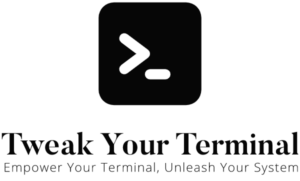In Unix-based systems such as macOS or Linux, the command-line interface provides a suite of powerful tools for managing files. This article will guide you through essential file operations including creation, viewing, copying, moving, and deletion, equipping you with the skills to effectively manage your system’s files from the terminal.
Understanding File Operations
File operations in a Unix-based system primarily involve the touch, cat, cp, mv, and rm commands. These commands allow you to create, view, copy, move, and delete files respectively. Let’s delve into each of these commands:
Creating Files with ‘touch’
The touch command is used to create new files. The basic syntax is:
touch fileNameHere, fileName is the name of the file you want to create.
Viewing File Contents with ‘cat’
The cat command, short for “concatenate”, displays the contents of a file. The basic syntax is:
cat fileNameHere, fileName is the name of the file you want to view.
Copying Files with ‘cp’
The cp command, short for “copy”, is used to copy files from one location to another. The basic syntax is:
cp source destinationHere, source is the current location of the file, and destination is the location where you want the copy to be placed.
Moving and Renaming Files with ‘mv’
The mv command, short for “move”, is used to move files from one location to another, or to rename files. The basic syntax is:
mv source destinationHere, source is the current location or name of the file, and destination is the new location or name.
Deleting Files with ‘rm’
The rm command, short for “remove”, is used to delete files. The basic syntax is:
rm fileNameHere, fileName is the name of the file you want to delete.
Conclusion
The command line offers a powerful suite of tools for managing files in Unix-based systems. By mastering these file operations, you can effectively manage your system’s files, streamline your workflow, and become a proficient terminal user. Remember to use commands like rm with caution to avoid deleting important data. Happy file managing!
